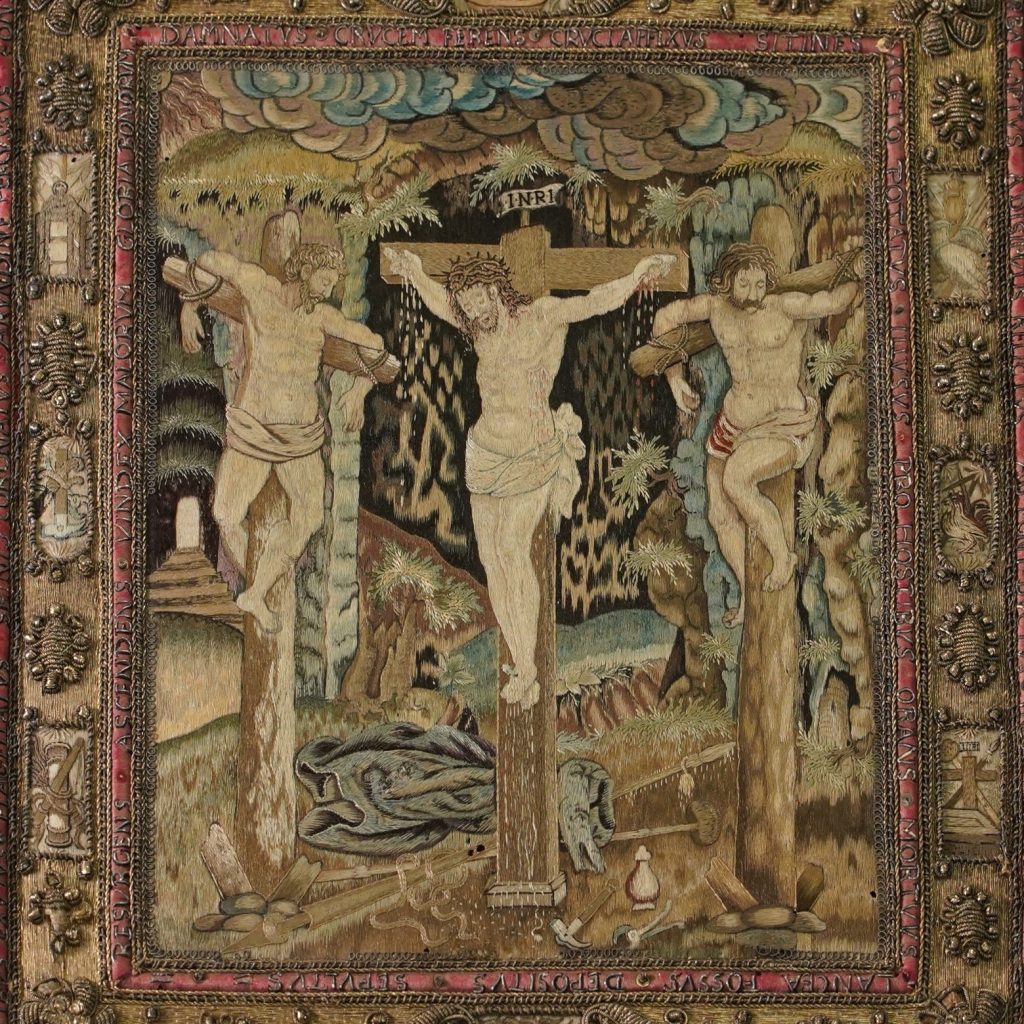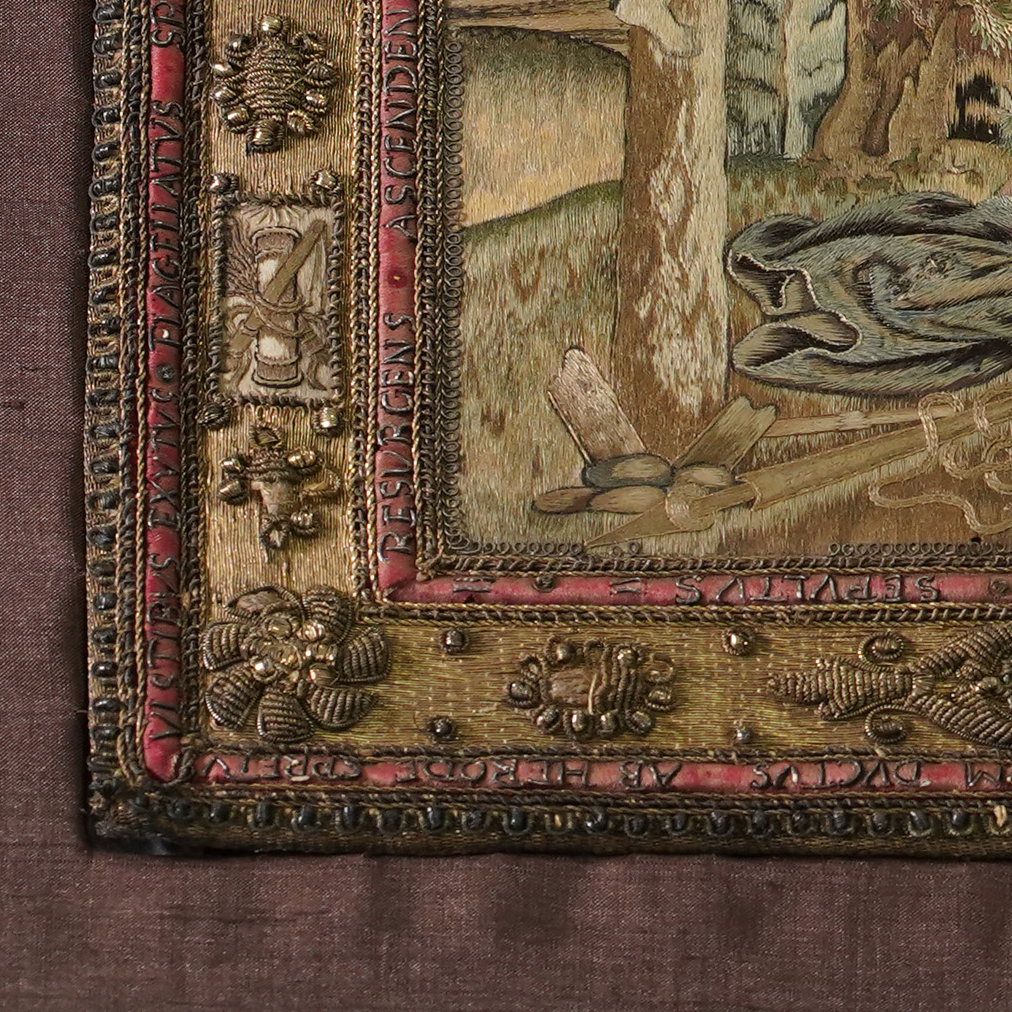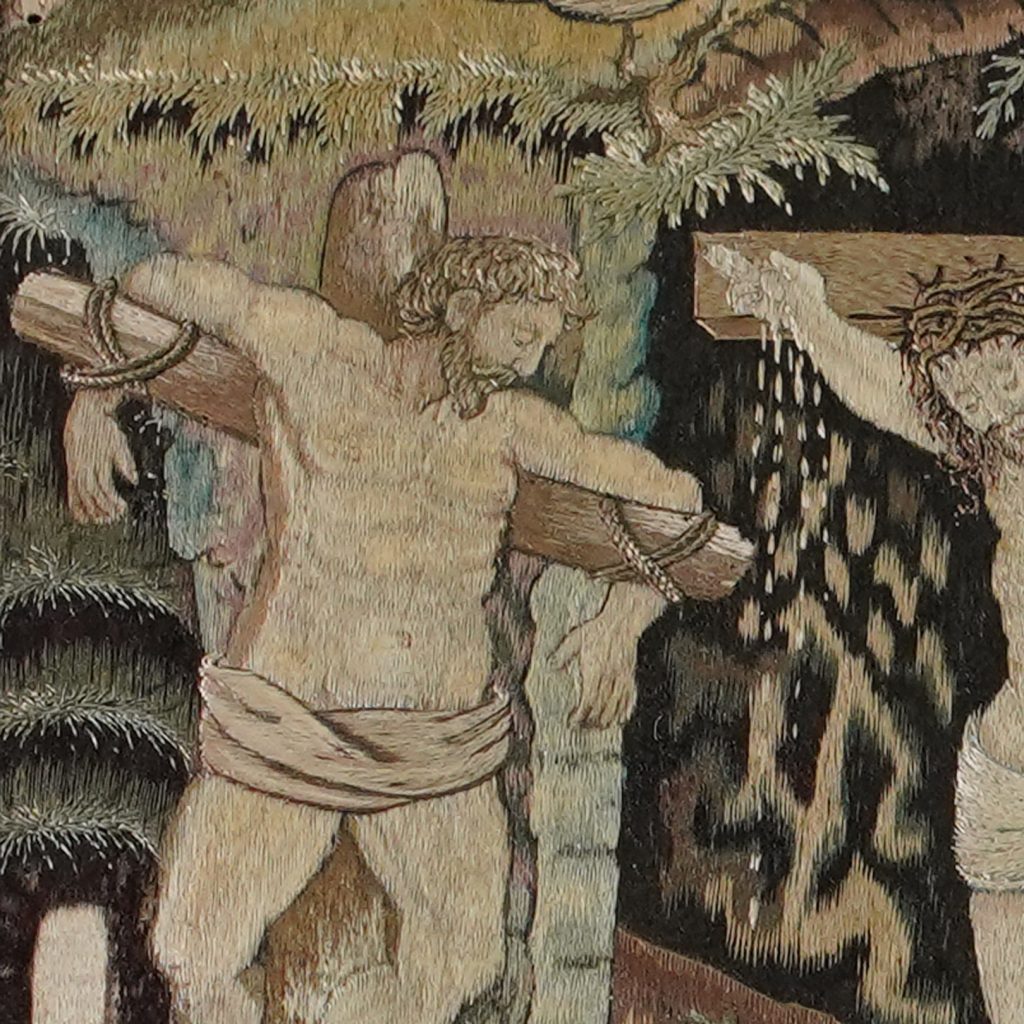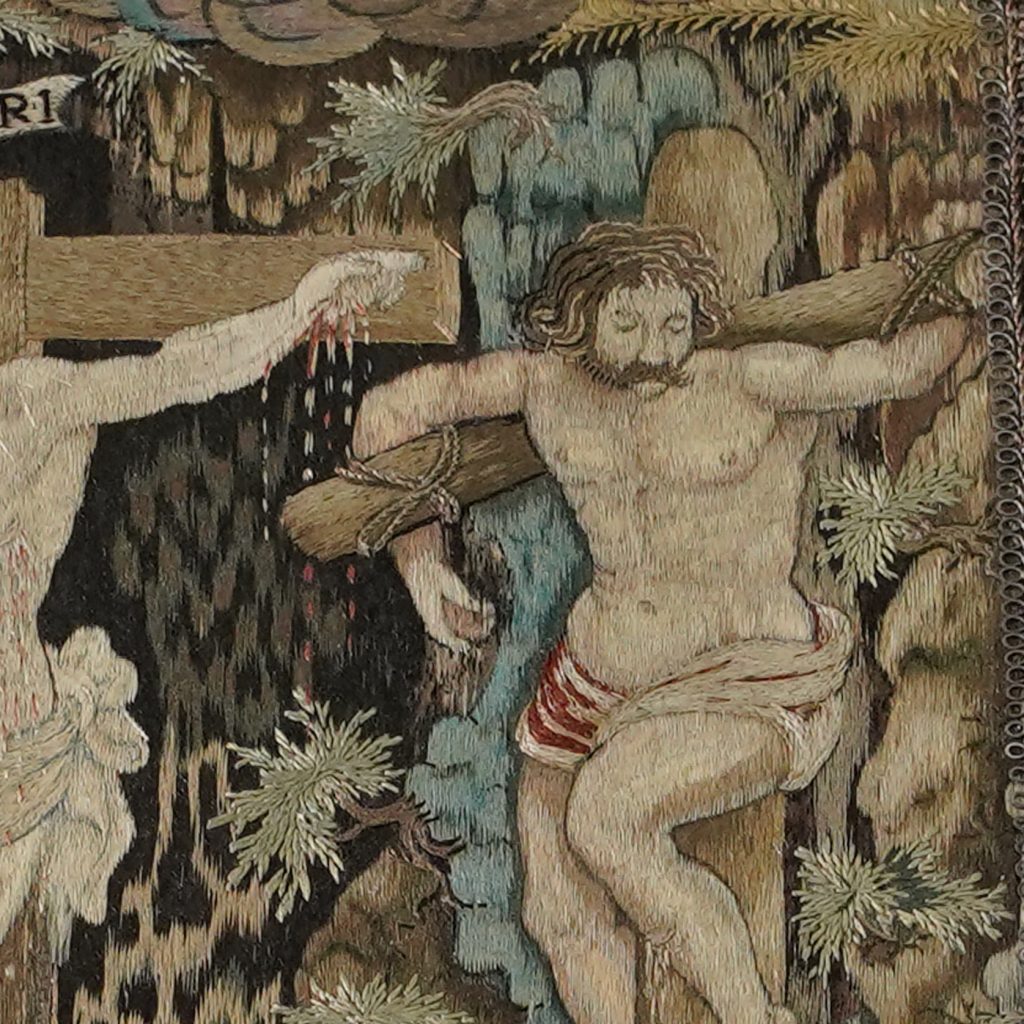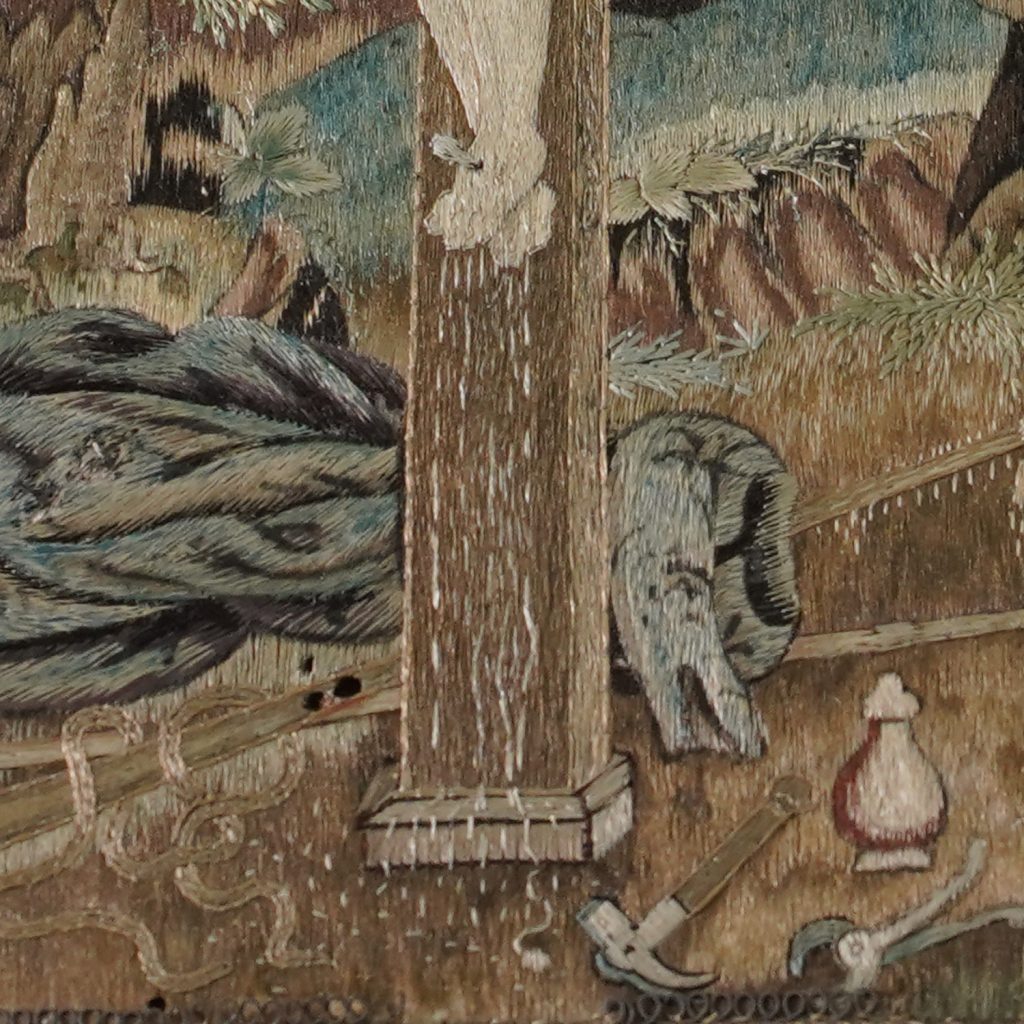Thanks to a generous donation from benefactor Leslie Durst, we have acquired an exquisite seventeenth-century embroidery with a surprising history of secret Catholic devotion. This small panel embodies entwined stories of religious faith, skilled workmanship, and the mythology of a doomed Queen. Senior Curator of Historic Textiles Helen Wyld reveals its story.
Rendered with astonishing skill, the embroidery’s central image is created entirely in coloured silks, which are remarkably well preserved. It shows Christ crucified on Golgotha, with the two thieves either side of him. Above is a dramatic sky; below are his discarded clothes, and the tools used to torture him.
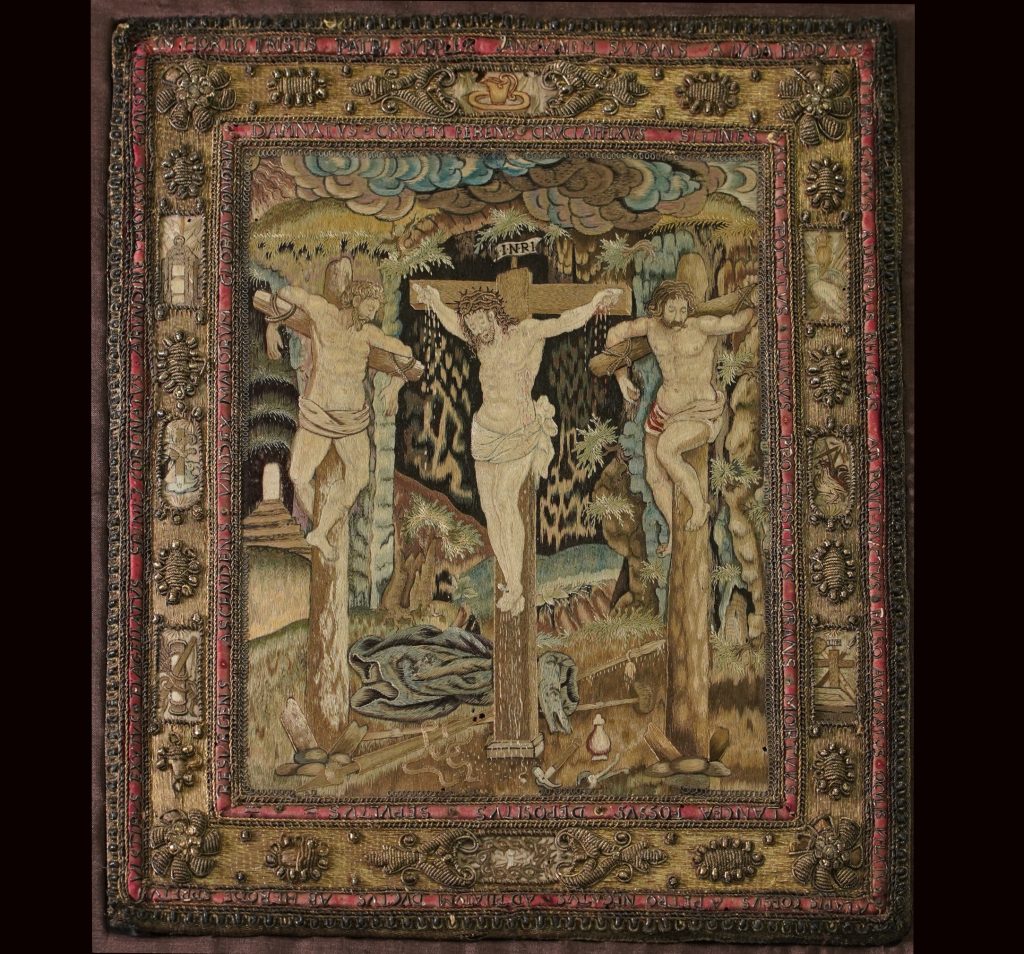
Needle painting
Zooming in on Christ’s face, the blood flowing from his wounds, and the delicately described landscape, the scene is described in astonishing detail with silk stitches even following the direction of leaves of grass. This technique, popular in the early 17th century, was sometimes known as ‘peinture à l’aiguille’ or ‘needle painting’, because the stitches resemble brush strokes.

Surrounding this central scene is a border richly adorned with gold thread and sequins, and symbolic words and pictures. The textile, which measures only 30 x 27 cm, was probably made in a professional workshop in the Low Countries (present day Belgium), possibly a religious foundation. Very few objects of this type and quality survive, still less in British collections.

Devotion
What was this beautiful textile used for? An old label described it as a bible cover, but this seems unlikely. Partly because of its shape: wider and squarer than the standard book sizes at the time. But more importantly, due to its imagery, which suggests that it was designed for use in private devotion.
The image of Christ is one of intense suffering, intended to allow contemplation of the saviour’s sacrifice. The border contains a Latin prayer describing each stage of Christ’s Passion – the days leading up to and including his crucifixion – with accompanying images. The textile therefore acted as an aid to prayer. It was common for small devotional embroideries to be owned by high-status Catholics in the 16th and 17th centuries. For example, Margaret of Austria owned several such images, some kept in velvet cases. But who did our textile belong to?

Untangling the Story
When the textile appeared at auction in 2021, it was accompanied by an early 20th century label saying that it had been made by Mary, Queen of Scots. At National Museums Scotland, we encounter a lot of objects with claimed links to Mary Stuart, and it is always worth questioning their origins. In this case, the story was easily discounted: the image of Christ is based on a print after Flemish artist Marten de Vos, dated to c. 1598, a decade after Mary’s death. It was also clear that this textile was made by an embroiderer far more skilled than the Scottish Queen, whose surviving works are all executed in simple tent stitch. Nevertheless, the true history of this textile is equally intriguing.
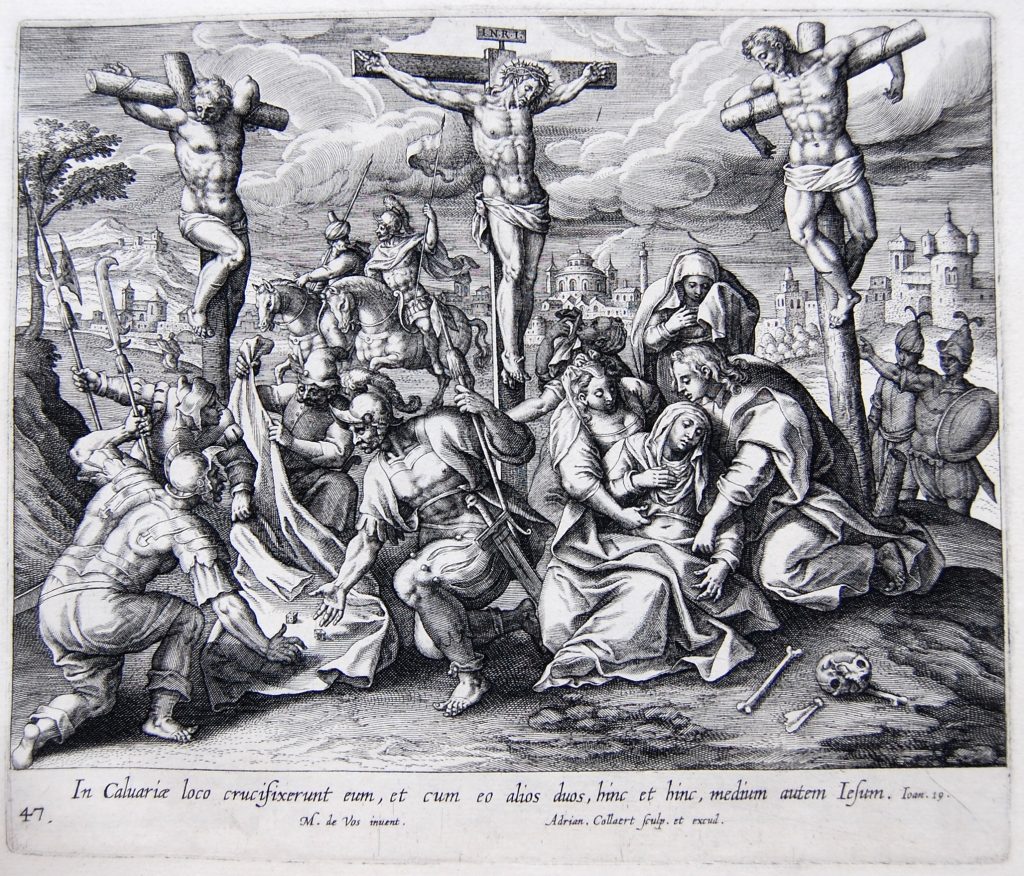
Elizabeth Stuart
Until 2021, the textile was at Greystoke Castle, a residence of the Howard family, Earls of Arundel and Dukes of Norfolk, the most prominent Catholic family in Britain. It is stitched (yes, stitched!) to an oak panel. An inscription on the back is signed by one Charles Howard of Greystoke (1630-1713), claiming that it was made by Mary, Queen of Scots, and that it had been given “by her mother to my mother”.
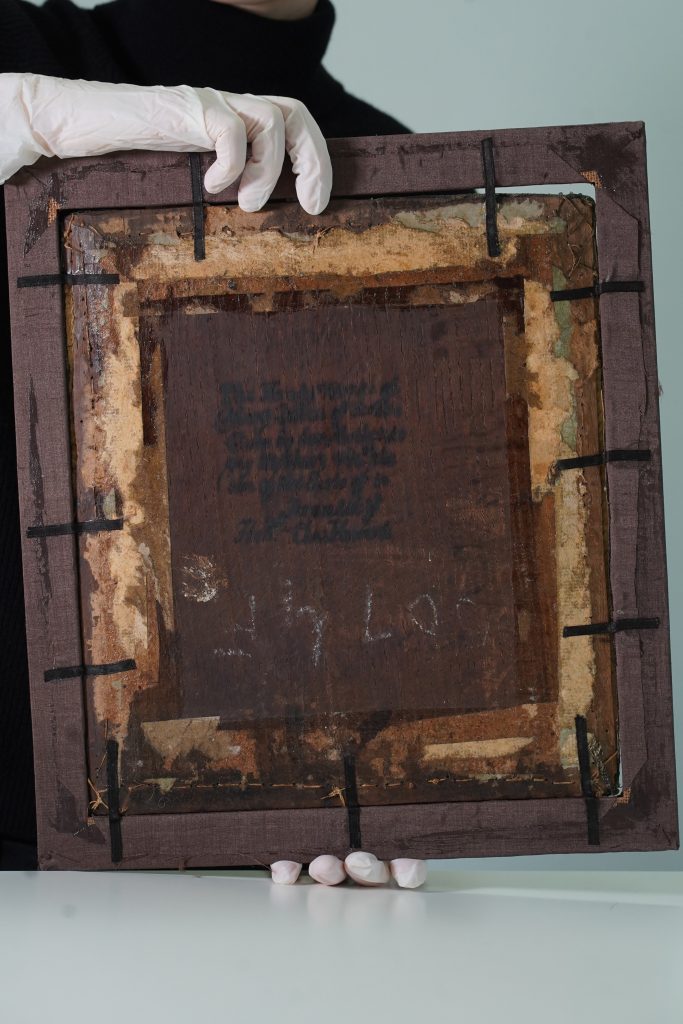
Charles Howard was a younger son of Henry Howard, 15th Earl of Arundel. His mother was Elizabeth Stuart, Countess of Arundel (1610-1674), daughter of a Scottish nobleman, Esmé Stuart, 3rd Duke of Lennox. He was another prominent Catholic, who was briefly first in line to the Scottish throne. Elizabeth’s mother was Katherine Clifton, 2nd Baroness Clifton (c. 1592-1637), who was also Catholic. Although the link Charles claims to Mary Stuart is untrue, the textile could very plausibly have belonged to his mother, Elizabeth Stuart, and to her mother, Katherine Clifton.
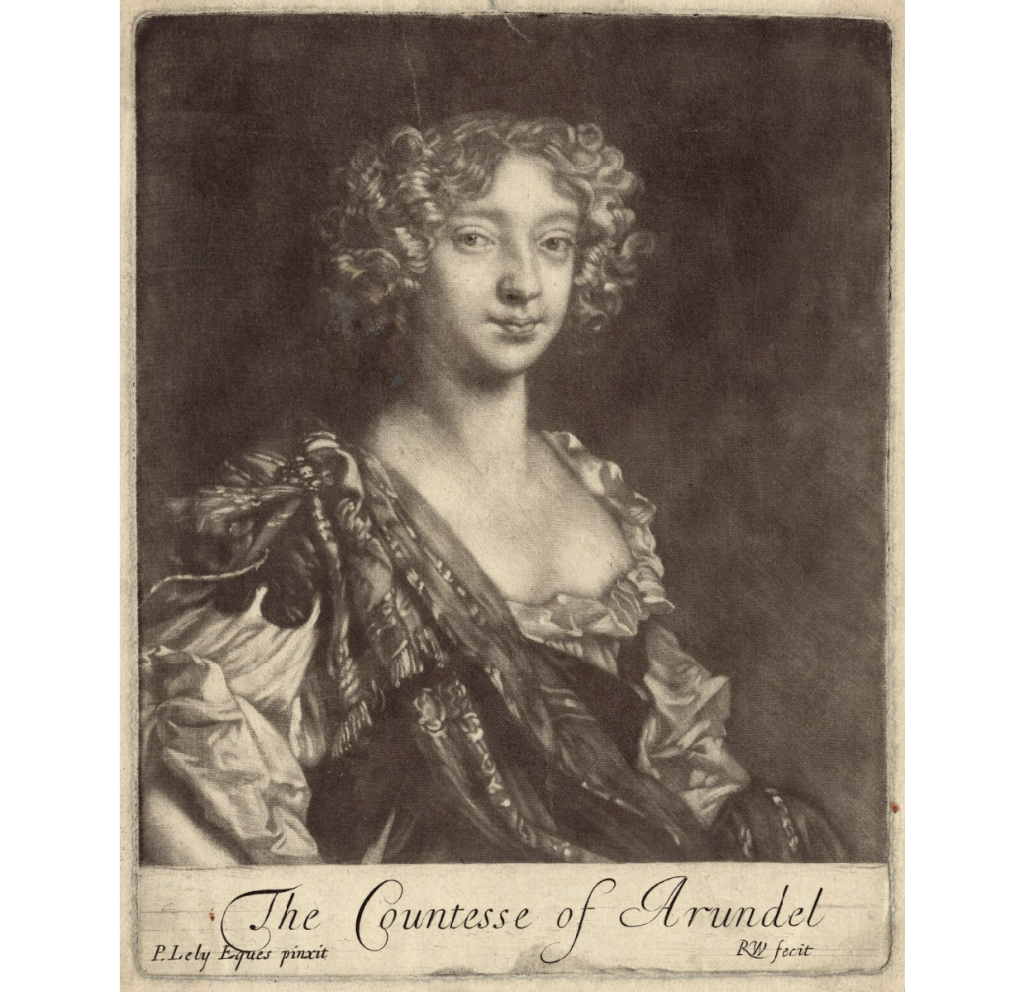
Hidden Faith
Despite the aristocratic status of these early owners of the textile, its survival represents a lucky escape. After the Reformation of the 16th century, Protestantism became the state religion in both England and Scotland. Objects of Catholic worship were confiscated and destroyed. Devotional images, especially when adorned with rich materials such as silk and gold, were seen as especially dangerous, as they were the subject of what Protestants condemned as idolatrous worship. Adherence to Catholicism – known as ‘recusancy’ because it involved recusing oneself from the official church – itself became a dangerous activity.
Elizabeth’s father, the Duke of Lennox, was imprisoned for his faith, and Katherine Clifton was excommunicated from the Church of Scotland. Numerous members of the Howard family were also imprisoned, and they were not allowed to use their title of Dukes of Norfolk.
A further phase of iconoclasm during the Civil War of the 1640s saw many more works of art destroyed, public and private, and Catholics were once again in peril. But Catholics continued to worship, often keeping devotional objects hidden in concealed chapels. As both Royalists and Catholics, the Howards themselves had their estates confiscated at this time. We may never know the early history of our embroidered crucifixion, but it could well have been used in secret Catholic devotion. And it must have been closely guarded to survive this turbulent period.
The Myth of Mary Queen of Scots
The later history of the textile sheds further light on the role of Mary, Queen of Scots in the creation of family mythologies. The note by Charles Howard on the reverse was probably written in the late 17th or early 18th century. It is significant that a Catholic family wished to stress their link to Mary, a Catholic monarch, at this time. The Revolution of 1689 had seen James II, a Catholic monarch and Mary’s great-grandson, ousted as king of England, Scotland and Ireland. And in 1707, the Union of the English and Scottish parliaments took place. In this period the exiled Stuarts – descendants of Mary, Queen of Scots – became a focus for both Catholic and anti-Union feeling. Charles Howard’s invented link with Mary was therefore a political statement.
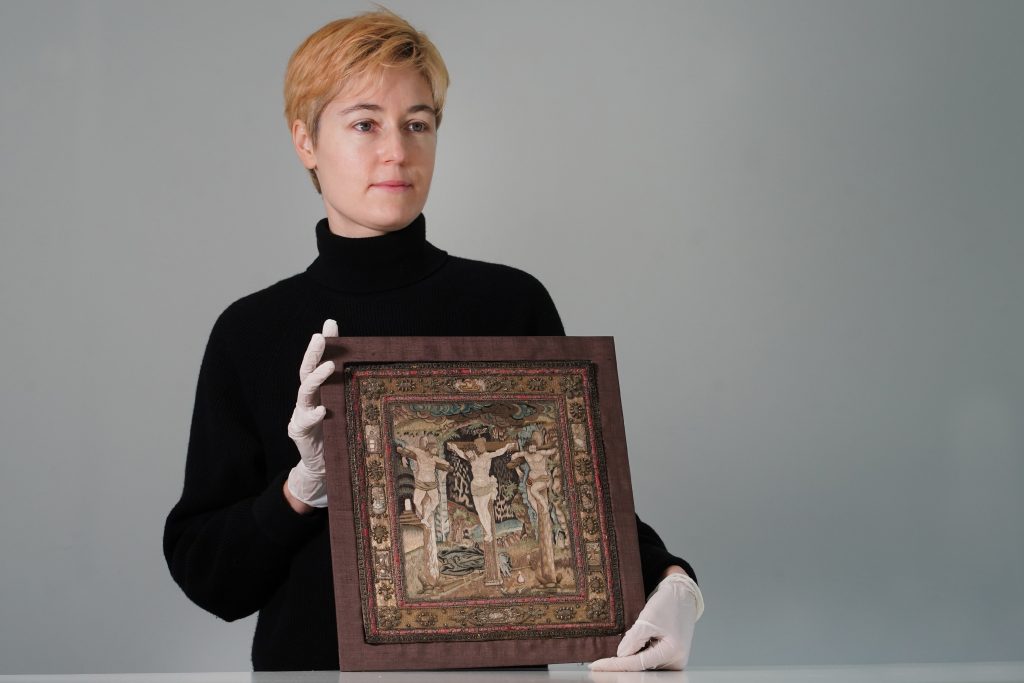
Later family members were keen to stress the connection too. In 1923, Mabel Howard, who then lived at Greystoke, wrote an article about the house including additional details about the embroidery. It was probably at this time that it was framed and displayed with the label repeating the Mary Queen of Scots story.
Our initial research on this beautiful textile has debunked one myth but revealed a far more complex story of family loyalty, mythology and faith. Research is ongoing to establish the early history of the textile, and it is undergoing conservation treatment ahead of its proposed display in our Art of Living Gallery. Stay tuned as we unravel this thread!
Thanks to textile collector and philanthropist Leslie B Durst’s generous donation which allowed National Museums Scotland to acquire this exquisite embroidered textile.

